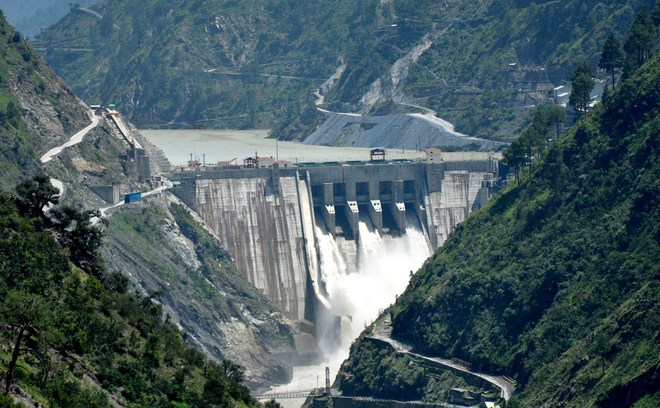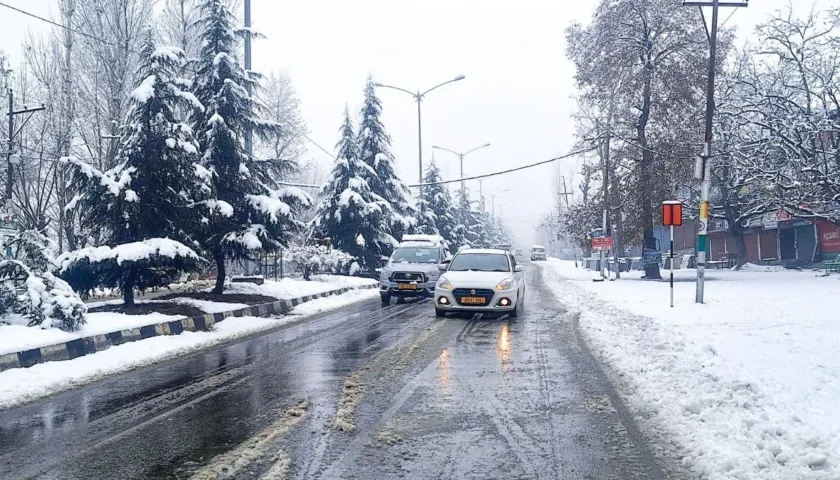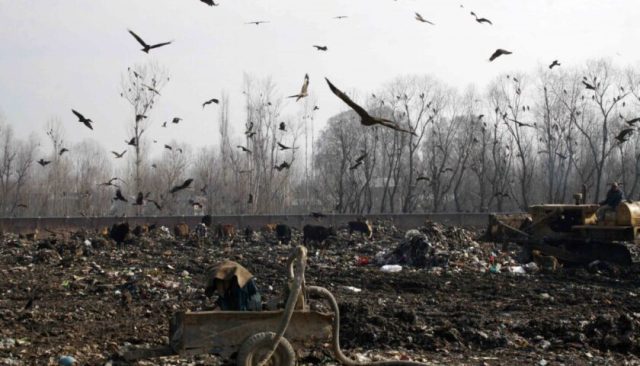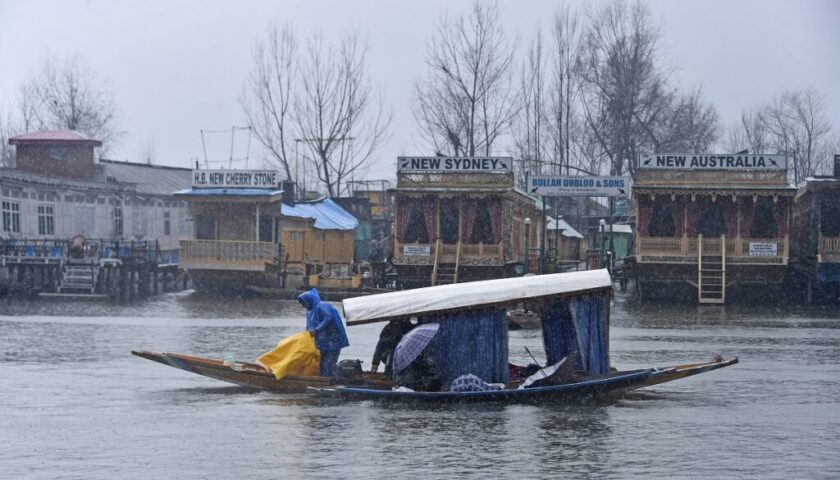Baglihar Hydroelectric Project Feels Climate Change Heat
Srinagar, February 22, 2025 – The stark reality of climate change has become increasingly evident at the Baglihar Dam along the Chenab River in the Ramban district of Chenab Valley. The prestigious Baglihar hydroelectric project, with an installed capacity of 900 MW, is currently generating a mere 150 MW of power, signifying a decline of 83 percent.
“Climate change and less precipitation are having a direct impact on the power generation from Baglihar,” said a senior Power Development Department (PDD) official, noting that both stages of the project were operating significantly below capacity.The official said that the current generation had dropped to between 120 MW to 150 MW, a fraction of the project’s full potential.
The dramatic reduction in power generation at Baglihar reflects a broader crisis affecting Jammu and Kashmir’s hydropower sector. A senior PDD official, addressing the gravity of the situation, said, “Reduced water levels from water bodies have led to 80 percent drop in hydropower output. Key projects like Baglihar and Salal have seen their generation halved due to decreased river discharge.”
This decline is part of a larger pattern affecting hydropower generation across Jammu and Kashmir, where power generation has fallen to 606 megawatts against an installed capacity of 3500 MW, marking an unprecedented decline of over 80 percent. To address mounting power demands, the administration has significantly increased its power purchases. A senior KPDCL official said, “Currently, to meet the demand of around 3000 MW in J&K, we are purchasing close to 2300 MW, which was not the case during the past few years.”
This dependency has led to substantial financial implications, with the region’s power purchase expenditure reaching Rs 55,254 crore over the past decade. The situation at Baglihar is particularly concerning given its strategic importance in J&K’s power infrastructure. As a run-of-the-river project owned by the Jammu and Kashmir State Power Development Corporation Limited, it was designed to be a cornerstone of the region’s power independence. However, the current output levels signal a growing crisis that extends beyond immediate power generation concerns to broader questions about climate change adaptation and infrastructure resilience.
The declining trend in hydropower generation shows no signs of immediate improvement. Historical data reveals a steady decrease from 5452 million units in 2019-20 to 5199 million units in 2022-23, with the Baglihar project’s reduced output playing a significant role in this decline. The crisis is further complicated by delays in new power projects, with initiatives like the New Ganderbal Power Project and Lower Kalnai not expected to commence operations before 2027. As J&K’s power liabilities approach Rs 35,175 crore, the situation at Baglihar serves as a stark reminder of the urgent need for comprehensive reforms in the region’s power sector.
Experts are increasingly calling for immediate action to enhance local power generation capabilities and accelerate the completion of pending projects to address this growing crisis in the region’s power infrastructure.
Impact of Climate Change on Baglihar Project
The Baglihar hydroelectric project, also known as the Baglihar Dam, is a run-of-the-river power project that relies on the consistent flow of the Chenab River to generate electricity. However, the region has been experiencing erratic weather patterns, reduced snowfall, and prolonged dry spells, all of which have contributed to a significant reduction in water flow. This has directly impacted the power generation capacity of the project.
Factors Contributing to Reduced Power Generation
Several factors have contributed to the decline in power generation at the Baglihar hydroelectric project:
- Reduced Snowfall and Glacial Melt: The Chenab River, which feeds the Baglihar Dam, relies heavily on the melting of glaciers and snowfall in the upper reaches of the Himalayas. Climate change has led to reduced snowfall and accelerated glacial melt, resulting in lower water levels in the river.
- Prolonged Dry Spells: The region has been experiencing prolonged dry spells and reduced precipitation, further exacerbating the water scarcity issue. This has led to a significant drop in the water levels of the Chenab River, affecting the dam’s ability to generate power.
- Increased Temperature: Rising temperatures have also played a role in reducing the water flow in the Chenab River. Higher temperatures lead to increased evaporation rates, reducing the overall water availability for power generation.
Economic and Environmental Implications
The decline in power generation at the Baglihar hydroelectric project has both economic and environmental implications:
- Economic Impact: The reduced power generation has led to a decrease in the availability of electricity for industrial and residential use. This has affected the local economy, as industries and households face power shortages and increased reliance on alternative energy sources.
- Environmental Impact: The reduced water flow in the Chenab River has also impacted the local ecosystem. Aquatic life and vegetation that depend on the river’s flow are facing challenges due to the reduced water levels.
Call for Urgent Action
Experts are calling for urgent action to address the impacts of climate change on the Baglihar hydroelectric project and other similar projects in the region. Sustainable water management practices, reforestation efforts, and measures to reduce greenhouse gas emissions are essential to mitigate the effects of climate change and ensure the long-term viability of hydroelectric projects.
Conclusion
The Baglihar hydroelectric project is a critical infrastructure for Jammu and Kashmir, providing much-needed electricity to the region. However, the impacts of climate change have significantly affected its power generation capacity. Immediate and concerted efforts are required to address these challenges and ensure the sustainability of the project.




